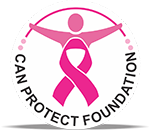Breast Self-Exam: Your Comprehensive Guide to Breast Health
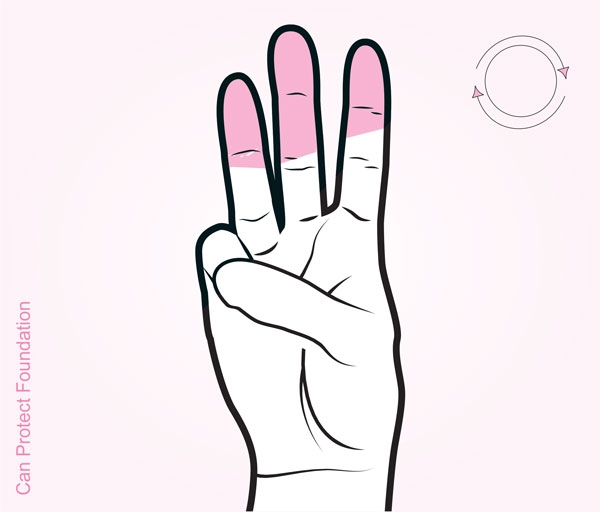
A Breast Self-Exam (BSE) is a vital tool that empowers you to detect changes in your breasts, facilitating early discussion with a Doctor. Regular BSEs play a pivotal role in maintaining optimal breast health and identifying potential issues at an early stage, when they are more manageable. By conducting BSEs, you increase the likelihood of early detection of breast cancer, enabling timely intervention and treatment. Although most breast changes are benign, it’s imperative to communicate any alterations to a healthcare professional for proper evaluation and guidance. Your proactive approach to breast health can make a significant difference in your overall well-being.
Understanding Breast Self-Exams:
A breast self-exam is a systematic approach to examining your breasts, promoting regular observation and tactile assessment. While mammograms are the gold standard for detecting breast abnormalities, a BSE conducted at home allows you to become familiar with your breast characteristics, contributing to early detection.
Conducting a breast self-exam is an easy process that any woman can learn quickly. It takes just a few minutes to perform and can be seamlessly integrated into your routine. This simple practice empowers you to take control of your breast health and enhances your ability to notice any changes that might occur. By investing a small amount of time, you equip yourself with a valuable skill that can potentially lead to the early detection of breast abnormalities, including cancer. This proactive approach to your well-being is a powerful step towards maintaining optimal breast health.
Importance of Self-Exams
Monthly breast self-exams contribute to the early detection of potential infections, breast diseases, or breast cancer. The objective of a self-exam is to understand what’s typical for you. Recognizing the usual look and feel of your breasts aids in identifying any deviations promptly.
It’s important to note that while self-exams are vital, they should not replace clinical breast exams by healthcare providers or screenings like mammograms. Regular visits to your primary care provider or gynecologist for breast cancer screenings remain essential.
Consult your doctor for personalized guidance on conducting self-breast exams, considering your health history and proper technique.
Frequency of Self-Exams
Doctors recommend conducting a breast self-exam on a monthly basis. Despite its limitations in diagnosing breast cancer, a BSE remains a proactive step you can take at home to ensure your breast health.
Research indicates that many individuals diagnosed with breast cancer first noticed a change through a self-exam, underscoring the importance of recognizing your baseline and reporting any changes promptly.
Selecting the Right Time
For menstruating women, it’s advisable to perform a self-exam after your period. Postmenopausal women and those with irregular cycles can choose a consistent day each month, such as the first or last day of the month, to conduct the exam. Keeping a record of your findings can aid in tracking any changes. You can record any changes in your breast with the help of Canapp
Conducting a Self-Breast Exam
Regular self-breast exams are an essential aspect of maintaining breast health and detecting any potential abnormalities early. This systematic process empowers you to become familiar with the characteristics of your breasts, enabling you to recognize changes promptly. Through the following steps, you can easily learn how to conduct a self-breast exam at home, taking a proactive approach to your well-being.
Important Point before conducting Breast Self-Exam
Touch
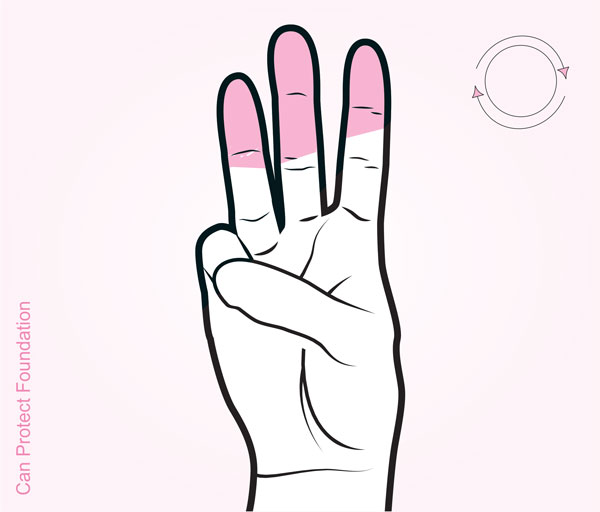
Use the pads of your three middle fingers. To check your entire breast area, start at your armpit with varying degrees of pressure by moving in a circular motion as much as 25 paise coin, and in the other direction (as shown in the pictures below) and slowly move up the entire breast. Check, and do the same with the other breast.
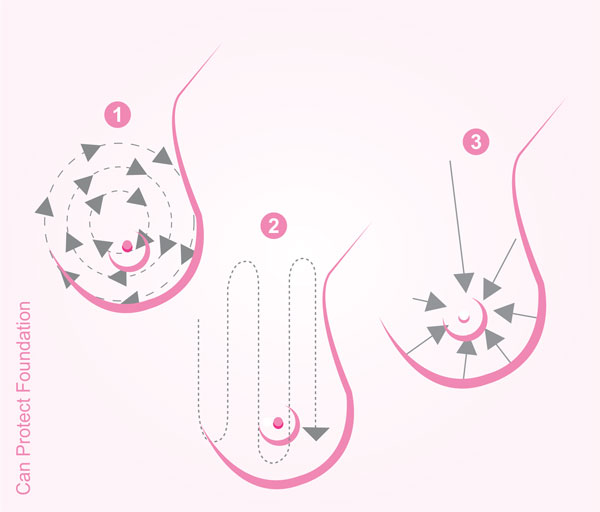
Exam Perimeter
Move your fingers up and down your entire breast area, from your collarbone down to your breastbone and under your armpits, from your breastbone to your armpit. Examine the other breast in the same way.
Breast Self Exam Steps
Stand in front of a mirror
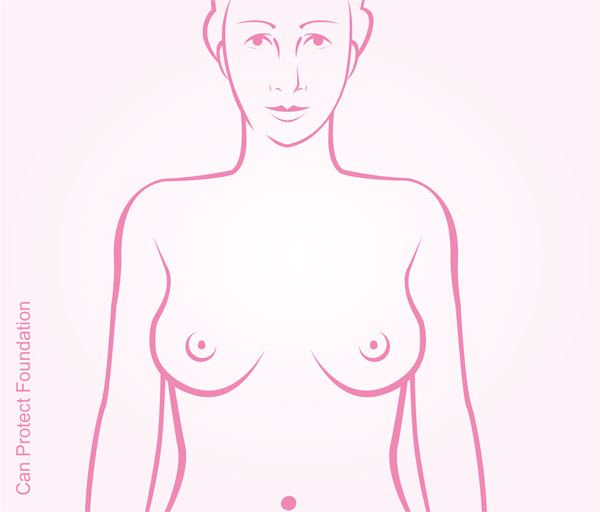
Place both hands down along your body, and check that there are no changes in the size of the breast or the color and texture of the nipples, the skin and the direction of your nipples point.

Then place both hands on the head and check if there are any changes in the size of the breast or the color and texture of the nipples, the skin and the direction of your nipples point.
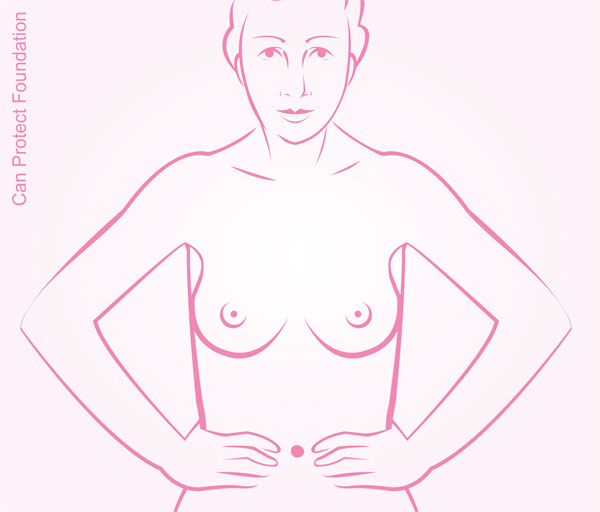
Then place the hands on the hips and tighten the chest muscles. Now see if there are any pits, wrinkles, redness, scabs, lumps or changes in the shape or colour of the skin on the breast.
Then squeeze both the nipples between the thumb and forefinger to check the discharge (something like water), and see if there is any discharge.
After waking up in the morning, note that there is no brown, red or yellow discharge from the nipples on the clothes. Nipple discharge is not normal.
In The Shower or Bath
Your skin is wet and soapy while bathing, so breast self-examination can be done easily at this time.
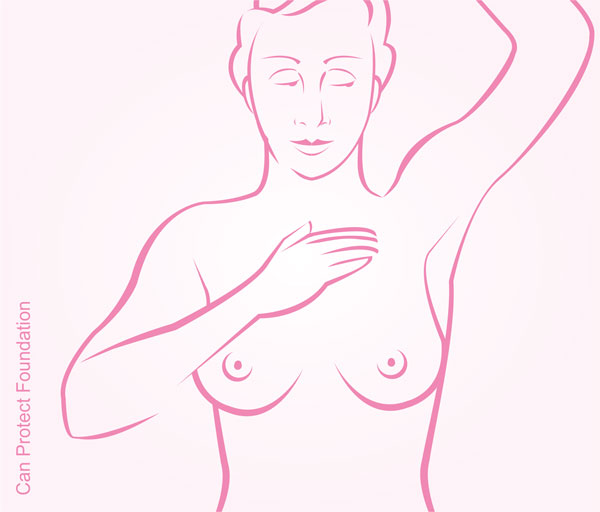
In the shower, raise your right hand above your head. Examine your entire breast area in both breasts using the “Touch” technique as described in the test section.
Lying Flat On The Back
Lie flat on your back, this helps to flatten the breast and makes testing easier.

Place a pillow under the right shoulder. Start from the left hand side and make a series of checks by rotating 25 paisa (25 Paisa Coin) in circles and the other way around (as shown in the pictures above). Use light, medium and deep pressure. Think of the test perimeter pattern. Cover your entire breast area with the probe. Repeat the test in the other breast.
Conducting a self-breast exam takes only a few minutes and can easily become a part of your daily routine. You can perform the exam while dressing, lying in bed, or during a shower.
Potential Drawbacks
While self-exams offer numerous benefits, some challenges include:
- Misconceptions: Some individuals incorrectly believe that self-exams replace clinical exams or mammograms, which is not the case.
- Anxiety: Unfounded concerns about cancerous lumps can lead to unnecessary anxiety.
Interpreting Findings and Follow-Up
Variations in breast tissue are normal, making it crucial to be familiar with your breasts’ usual appearance. If you notice changes such as lumps, discharge, skin alterations, or nipple changes, consult your Doctor. Professionals can assess whether additional tests like ultrasound or mammograms are necessary.
Additional Insights
Understanding the signs of breast cancer enhances your familiarity with your breasts. Warning signs include inverted nipples, skin changes, nipple discharge, and more.
While Doctors acknowledge that self-exams aren’t the primary method of detecting breast cancer, they recommend self-exams to become comfortable with your breasts. This knowledge allows you to promptly report changes to your provider.
A self-breast exam should not replace mammograms or clinical exams. Instead, it complements these screenings and aids in maintaining breast health.
Incorporating a monthly breast self-exam is a crucial practice for preserving breast health and recognizing early signs of disease. By seamlessly integrating this simple routine into your daily life, you develop a profound understanding of your body. Armed with knowledge about your baseline, you become vigilant about changes and empowered to engage in informed conversations with your Doctor. This collaborative effort ensures proactive breast health management and the best possible outcomes.
Canapp – Free Mobile App for Breast Self Exam
To further enhance your breast health journey, we invite you to explore Canapp – an innovative tool developed by Can Protect Foundation. With Canapp, you can learn how to perform a thorough self-exam, recognize warning signs, and mark any changes for discussion with doctor. Together, let’s empower ourselves with knowledge, embrace technology, and take charge of our breast health. Download Canapp today and embark on a journey of proactive well-being.
Explore Canapp – Your Comprehensive Breast Health Companion Download Canapp Now
At Can Protect Foundation, we are dedicated to empowering you with the resources you need for informed breast health management. With Canapp, we are revolutionizing how you approach breast self-exams and awareness. Your health is in your hands, and we’re here to support you every step of the way.
Disclaimer: Canapp is not a substitute for medical advice or clinical examination. If you have concerns about your breast health, please consult a qualified healthcare professional.
Breast Self Exam Guide is available in Other Languages also:
2. Breast Self Exam in Garhwali
